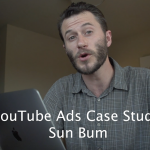 Membership TodaySign Up Now
Membership TodaySign Up NowVideo Transcript
How Come I can’t Get my YouTube Ads to Spend?
Hey, what’s up, everybody? Justin Sardi, Founder and CEO of TubeSift. And on today’s post, we’re going to be talking all about troubleshooting your video ads. A lot of people have come to me and asked, “How come I can’t get my YouTube ads to spend? I put this much for a budget. It says it’s going to spend and it’s not spending.” We’re going to talk all about how and why that happens and break down each step of the process that will help you make sure your ads spend the budget that you want them to spend every single day so you can continue growing and scaling your business. So let’s go ahead and dive right in.
YouTube has made a, not even a couple, they’ve made a lot of very big changes, or Google Ads has made a lot of very big changes to the way that their ad platform works over the past year or so. They’ve introduced things like Target CPA. Originally, you were just able to target based on max cost per view, which was great, but then they recently introduced Target CPA as well as Maximize conversions.

Bidding Strategy is Key
And so what I’m going to talk about today is why bidding strategy is so key. As you can see on the screen right here, I’m showing a little screenshot of Target CPA verse Maximize conversions. What those are is those are essentially ways for Google to go in and optimize your campaign. And by optimize your campaign, I mean show your ad to people that Google knows are most likely to convert. They’re going to go in and optimize your campaign, either spend more or less. So you might actually end up spending a couple dollars per view on one specific person. However, that person is 10 times more likely to convert into a buyer for you. So Google’s going to show your ad to those people over people who are cheaper per view, but might not convert, if that makes sense.
So we’ve got these different bidding strategies. These are the number one reason that your ads will get hung up, especially on a new account. So if you have a brand new account and you haven’t ran any conversions through your account, you’re going to need to set up your conversion tracking pixel. And that actually goes for all of these things like Target CPA and Maximize conversions. You have to have a conversion tracking pixel set up because Google’s going to find that conversion tracking pixel and be like, “Okay, this is how much we’re paying to make a conversion.” And it’s going to start optimizing your campaigns based on that.
Setting up Conversion Action Sets
We can also set up conversion action sets and that’s a whole another blog post that we will be making soon. Once it’s ready, we’ll be dropping it below this as well. I will talk all about conversion action sets and how to let Google know which specific conversion actions to be optimizing for. You can always check out our blog post on setting up conversion tracking. We do have that below this post as well, so check that out because that is obviously a predecessor to knowing how to set all of this stuff up.
So we’ve got target CPA and Maximize conversions. With Target CPA, you’re able to say, “Hey, Google, I want to pay $10 for a conversion.” Well, if Google has no data on what a typical conversion costs for you, a lot of times they won’t run your ads because they don’t want to overspend on that $10 you’re saying you want to pay. We’ll talk about how to fix that in a second here.
Maximize Conversions
The other one is Maximize conversions. That one’s a great place to start if you have no conversions through your pixel at all yet. I can go, “Maximize conversions,” and Google will then just get as many conversions for your budget as possible. And over seven or so days, Google’s going to learn with these different goals and it’s going to try and make sure that it gets you the most conversions for your dollar amount. So most conversions based on the amount of ad spend.
The other thing right here is Max Cost Per View. This is another type of bidding strategy. The way to get Max Cost Per View is to set up a campaign without a goal. So when you go into set up a campaign on Google, you’ll have a bunch of different goals like leads, sales, website traffic, brand awareness, things like that. If you choose one of those, Google’s going to ask you, “How do you want to pay?” and that’s going to be the Target CPA or Maximize conversions. Well, if you go, “No goal,” you have the option to do max cost per view and that’s going to come into play in a few minutes here.

How to Troubleshoot your Ads
Let’s talk about exactly how to troubleshoot your ads, and I will be jumping over to Google Ads and talking all about this in a second here. But first I want to cover how you troubleshoot your ads. So number one, you’re going to want to check your bidding method. You’re going to want to figure out which bidding method you use. Because if Google’s optimizing for conversions like I mentioned, and you have no conversion data, they don’t quite what to optimize on. So sometimes it’s best to start with a no goal and get a couple of conversions, so Google knows, “Okay, this is about what’s going on. Now we can start to push some traffic to it.”
Number two, the tip number two, and this one works extremely well, or this one only works with Target CPA. What I’d like to do is if it’s not spending, start by bumping your Target CPA up to something like $100. Let’s say you’re doing webinar registrations and you want to pay $10 per webinar registration. You’re going to want to bump your Target CPA up to $100. I know that sounds crazy and nobody wants to pay 100 bucks for a webinar registration. However, when you do that, it gives Google’s algorithm some room to basically run some traffic. You might start off paying a little bit more than 10 bucks, but it’s really going to start to figure out what’s going on.
And once you get a couple, it’ll open the traffic flood gates up, if you will. And once you get a couple of those conversions coming through, you can start to bump that Target CPA down. So once a day, let’s say I started at 100 bucks, we start to get two or three conversions at whatever, 15, 20 bucks. I’ll bump that Target CPA down to $50. And from there, I’ll let it run for another day. It’ll get some for 20 bucks, 15, 20 bucks. Again, you bump it down again to $25. You just keep bumping it down day by day, but you’re still giving Google’s algorithm enough to run with that ad and make sure that everything’s working. So that’s tip number two.
Number three, I like to duplicate the campaign. Let’s say you’re going with Target CPA and it just will not spend. I like to duplicate that campaign and then change that bidding method to say Maximize conversions and see if that works. And if all else fails after bumping up your Target CPA, Maximize conversions isn’t working, then it’s time to go set up a campaign with no goal and go Max Cost Per View.
Guarantee your Ad will Show
This will almost guarantee that your ad is going to show because you’re just telling Google, “Don’t worry about conversions. Only worry about the most that I want to pay per view.” In the past. There weren’t calls to action on the videos where you had no goal. Recently they’ve added calls to action. So honestly, the Max Cost Per View is a great place to start if you’re just getting started.
So let’s go ahead and jump over to Google Ads. I’m going to show you how to duplicate these campaigns, how to figure out which of your bidding methods you’re using, if you’re letting Google optimize your campaigns or not. And then we’ll walk through the troubleshooting steps. So let’s go ahead and jump over. We’ll dive right in.
The very first thing you’re going to want to do is make sure your campaign is enabled. And to do that, you’re going to click over here, like into the campaign itself. Or not enabled, but make sure that it has been approved. So you go into the actual campaign itself and then you’ll go to ads and extensions. What you will see is a status over here. Mine says, pause, campaign paused. But what this will say is approved. Some of these are disapproved, some like right here, campaign paused, disapproved. This is a video I ended up deleting from YouTube and they just disapproved it when we put some tracking parameters through.
But basically if it says disapproved or pending, then your ad’s not even approved. So you want to make sure that it’s approved first. And that’s what you’re going to want to check for. You can see some of these are disapproved. We had this weird thing go on when we put some tracking parameters through and a bunch of dead landing pages were up and COVID got all weird. But yeah, like this is disapproved, so it’s not going to run. So you want to make sure you have an ad that’s able to run and it’s going to say eligible or just running, something like that. That is what you do first.
Second, what you’re going to do, let’s just come over to one of these over here. And for instance, if something’s not running, you go into your campaign, and then you’re going to go to settings. What you’re going to see is budget up here. Then you’re going to see down here, I’m trying to drive conversions and I am doing Target CPA. So bidding right here, Target CPA. If you’re doing Target CPA or Maximize conversions, just switch it. I like to pause the campaign, duplicate it, and then edit the new one and change it to the other one right there. So you can do that.
Target CPA and Max Conversions
Try Target CPA and Max conversions. If it’s not running with Target CPA, throw like a $100 Target CPA rate here. It will start running. And then over the next couple of days, just bump it down to what you actually wanted it to be. I cut it in half one day, cut it in half the next day, until you get it to where you want it to be, and that will work as well.
If all else fails, my last step for you is to come over here and create a new campaign. You want to create a new campaign without a goal or guidance. You go video campaign, whatever one you want to choose here. You can see Max Cost Per View. That’s what you want, Max Cost Per View. Then when you set this up, you say your Max Cost Per View is whatever, like 10 cents or something like that. Max Cost Per View should definitely let your campaigns run.
With those other two, it’s trying to optimize, like I was mentioning, and you’re going to need to make sure that you have some conversion through there. Sometimes it still gets a little weird even with my account and I’ve ran 100s of 1,000s of dollars through this account. So yeah, so that’s it for the tutorial part.
That’s it for me on this post. As always, if you liked this video, please give us the thumbs up on YouTube. Jump on over to YouTube, subscribe to us. It definitely helps us know which content’s working, what you want to hear more of, and encourages me to help make you more content. Leave a comment below either on the blog or on our YouTube channel. And as always, you can jump over to TubeSift.com, sign up for a monthly or an annual license, and get a huge ROI on all of your video ad campaigns. That is it for me on this video. Bye for now.
 Membership TodaySign Up Now
Membership TodaySign Up NowResources:
- My Ad Doesn’t Show up in Search Results from Google Support
- Find Out Why You May Not See your Ad from Google Support
- Fast and Easy Way to Guarantee YouTube Rankings from the TubeSift Blog



2 Comments
I currently have a no goal – max CPV campaign that is not spending. So…what does that mean?
You may need to increase your CPV to get it to start spending, and then adjust from there.